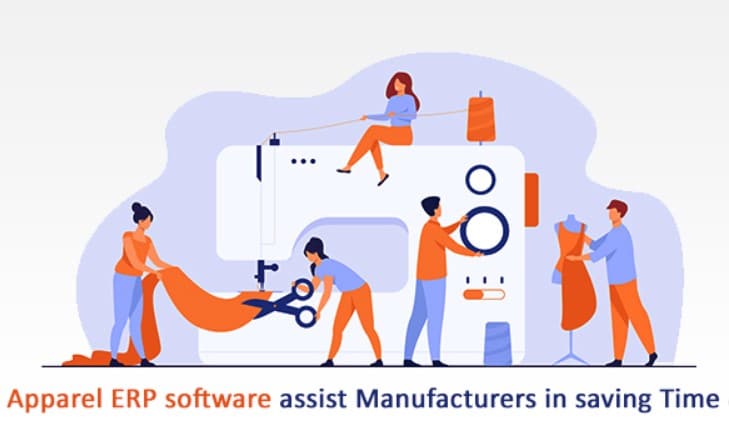In the fast-paced world of the apparel industry, staying ahead requires more than just keeping up with the latest fashion trends. Apparel ERP, or Enterprise Resource Planning, emerges as a transformative force, reshaping how businesses in the apparel sector manage their operations. In this article, we’ll explore the definition, evolution, key features, benefits, challenges, successful implementations, future trends, and insights on selecting the right ERP system.
Evolution of Apparel ERP
The apparel industry has faced traditional challenges in managing vast inventories, ensuring timely production, and meeting ever-changing customer demands. The integration of ERP systems marks a pivotal shift, offering comprehensive solutions to streamline processes, enhance efficiency, and adapt to the dynamic nature of the fashion world.
Key Features of Apparel ERP

Inventory Management
Apparel ERP excels in inventory management, providing businesses with a centralized system to track and manage stock levels efficiently. This feature ensures that businesses can optimize their inventory, reducing the risk of overstock or stockouts.
Order Processing
Efficient order processing is a cornerstone of successful apparel businesses. Apparel ERP automates order fulfillment processes, reducing processing times and ensuring accuracy in order fulfillment. This leads to improved customer satisfaction and streamlined operations.
Supply Chain Visibility
In the complex global supply chain of the apparel industry, visibility is crucial. Apparel ERP provides real-time visibility into the supply chain, from raw material procurement to the delivery of finished products. Businesses gain insights to make informed decisions and ensure a smooth flow of operations.
Benefits of Implementing Apparel ERP
Improved Efficiency
Apparel ERP enhances operational efficiency by automating routine tasks and providing real-time insights into various processes. This efficiency translates into quicker production cycles, reduced lead times, and improved overall productivity.
Enhanced Collaboration
Collaboration is key in the apparel industry where various departments need to work seamlessly together. Apparel facilitates communication and collaboration between different departments, fostering a cohesive work environment.
Data-Driven Decision Making
Informed decisions are critical for success. Apparel ERP leverages data analytics to provide insights into consumer trends, production efficiency, and inventory optimization. Businesses can make strategic decisions based on real-time data, staying ahead in a competitive market.
Challenges in Implementing Apparel ERP
Integration Complexities
Integrating an ERP system into existing apparel business processes can be complex. It requires careful planning and execution to ensure a smooth transition without disrupting ongoing operations.
User Training
Adopting a new ERP system often involves a learning curve for employees. Adequate training programs and ongoing support are essential to ensure that users can navigate and utilize the system effectively.
Customization Challenges
The unique processes and requirements of apparel businesses can pose challenges in customizing systems. Striking a balance between standard features and tailor-made solutions is crucial for successful implementation.
Case Studies: Successful Apparel ERP Implementations
Company A: Streamlining Production Processes
By implementing Apparel, Company A achieved a 25% reduction in production times. The system’s integration of order processing and inventory management significantly improved overall efficiency.
Company B: Enhancing Order Fulfillment
Struggling with order accuracy and fulfillment challenges, Company B adopted ERP, resulting in a 40% improvement in order accuracy and a 30% reduction in fulfillment times.
Future Trends in Apparel ERP
Sustainable Practices Integration
The future of Apparel involves a deeper integration of sustainable practices. systems will play a pivotal role in tracking and optimizing the environmental impact of apparel production processes.
AI and Predictive Analytics
Artificial Intelligence (AI) and predictive analytics will play an increasingly significant role in Apparel. These technologies will enhance forecasting accuracy, demand planning, and production scheduling.
Selecting the Right Apparel ERP System
Scalability
Choosing a scalable Apparel system is crucial for businesses with varying production volumes. The system should be able to grow with the business, accommodating increased transaction volumes and expanding product lines.
Industry-Specific Features
Apparel businesses have unique requirements. Selecting an ERP system with industry-specific features, such as style and size matrix management, is essential for a tailored and efficient solution.
Realizing the Full Potential of Apparel ERP
Change Management Strategies
Successful adoption of ERP requires effective change management. Businesses should communicate the benefits of the system to employees and provide the necessary resources and support for a smooth transition.
Continuous Improvement
ERP is not a one-time solution but an ongoing process. Businesses should adopt continuous improvement strategies, incorporating user feedback and staying abreast of technological advancements to maximize the benefits of the system.
Conclusion
In conclusion, Apparel ERP is the compass guiding the apparel industry toward efficiency, collaboration, and data-driven success. As businesses navigate the challenges and opportunities of fashion, embracing Apparel becomes not just a choice but a strategic imperative for those aiming to thrive in the ever-evolving world of fashion.
[adinserter block=”1″]